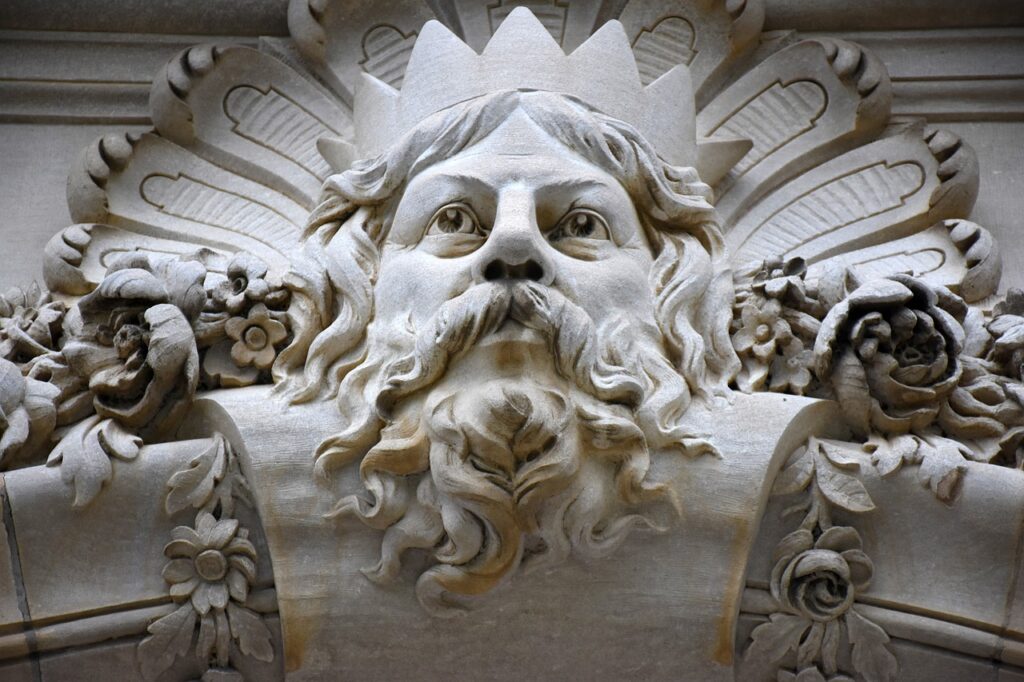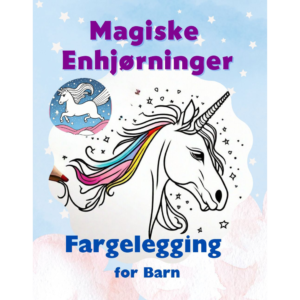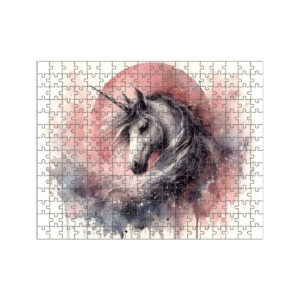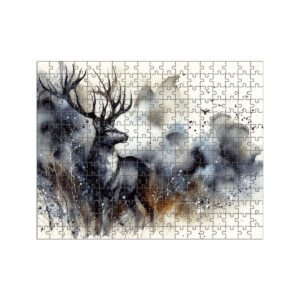
Explore & Play
Discover interesting topics and solve the accompanying crossword puzzle.
Giant Crossword | Explore Legendary Giants from Around the World
Table of Contents
At the beginning of this blog post, we invite you to engage with our Giant crossword before diving into the article. This interactive puzzle features legendary giants from various cultures, providing a fun challenge. If you’re already familiar with the topic, playing the crossword first will enhance your understanding of the myths and stories explored in the article. However, if you prefer to gain more knowledge about these fascinating giants, feel free to read the article first and then return to the crossword for an enjoyable experience.
Giant Crossword
You can either fill in the crossword puzzle directly on this page or click the button in the bottom right corner to print it for free.

Legends of Giants: Myths and Tales from Around the World
Throughout history, giants have captured the imagination of cultures around the world, appearing in myths, folklore, and literature as figures of strength, fear, and wonder. These towering beings not only symbolize immense power but also reflect the values and fears of the societies that created them. In this article, we will explore various giants from different cultures, delving into their stories and significance. As you read, be sure to check out our giant-themed crossword puzzle, which features many of the legendary figures we will discuss.
Giants in Ancient Mythology
Giants have long captured the human imagination, serving as figures of immense strength, supernatural abilities, and often embodying the forces of nature. In ancient mythologies, giants symbolize both the awe-inspiring power of the natural world and the challenges that humanity must face. Let’s explore some of the most notable giants from Greek and Norse mythology, as well as other ancient cultures.
A. Greek Giants
The ancient Greeks populated their pantheon with a variety of giants, each with unique stories that reflect the culture’s values and fears.
1. Atlas
Among the most iconic figures is Atlas, a Titan who was condemned to hold up the heavens for eternity. This punishment arose after the Titans, including Atlas, were defeated in the Titanomachy—a fierce battle against the Olympian gods. Atlas’s name has become synonymous with strength and endurance, representing the burden of responsibility. His image as a giant straining under the weight of the sky resonates with themes of sacrifice and duty, echoing the Greek ethos of heroism in the face of insurmountable challenges.
2. Cyclopes
Another fascinating group of giants in Greek mythology is the Cyclopes—one-eyed giants renowned for their brute strength and exceptional craftsmanship. These formidable beings were said to have forged Zeus’s thunderbolts, showcasing the relationship between giants and divine power. The most famous Cyclops, Polyphemus, appears in Homer’s Odyssey, where he is portrayed as a fierce but somewhat simple-minded creature. The cleverness of Odysseus in outsmarting Polyphemus emphasizes the Greek belief in the triumph of wit over brawn, revealing that intelligence can be just as powerful as physical strength.
3. Titans
The Titans, a group of powerful deities, also deserve mention. Among them are giants like Cronus and Rhea, who played pivotal roles in the creation of the world and the eventual rise of the Olympian gods. Cronus, fearing that his own children would overthrow him, swallowed each of them at birth, highlighting themes of fear, power, and familial betrayal. This mythological narrative serves as a cautionary tale about the cyclical nature of power and the consequences of tyranny.
4. Hecatoncheires
The Hecatoncheires, or hundred-handed giants, further enrich Greek mythology. These monstrous beings, each possessing one hundred hands and fifty heads, were born from Gaia and Uranus. Despite their terrifying appearance, they played a crucial role in the Titanomachy, fighting alongside Zeus and the Olympians against the Titans. Their involvement symbolizes the chaotic power of nature and the idea that even the most fearsome forces can be harnessed for a greater good.
B. Norse Giants
Norse mythology presents its own pantheon of giants, often characterized by their connection to the natural world and elemental forces. Giants in this tradition are not merely antagonists but integral parts of the cosmic balance.
1. Jotnar
The Jotnar, or frost giants, are prominent figures in Norse myths, often depicted as adversaries of the gods. They embody chaos and primordial forces, standing in stark contrast to the order established by the Aesir gods. The Jotnar are frequently involved in conflicts with the gods, highlighting the tension between civilization and the wild, untamed aspects of nature. One of the most notable Jotnar is Thrym, who steals Thor’s hammer in a humorous yet perilous tale, emphasizing the unpredictable nature of giants.
2. Ymir
Central to Norse creation mythology is Ymir, the primordial giant from whom the world was formed. Ymir’s body was used to create the earth, with his flesh becoming the land, his blood the seas, and his bones the mountains. This narrative illustrates the interconnectedness of life and the belief that giants are fundamental to the very fabric of existence. Ymir’s death at the hands of Odin and his brothers symbolizes the triumph of order over chaos, reflecting the Norse worldview of an ongoing struggle between these opposing forces.
3. Fenrir
The giant wolf Fenrir is another significant figure in Norse mythology, destined to play a crucial role in the events of Ragnarok, the apocalypse. Fenrir’s immense size and strength make him a formidable opponent, and his prophesied role in the death of Odin underscores the inevitability of fate. Fenrir embodies the theme of uncontrolled power and the fear of the unknown, serving as a reminder of the dangers that lurk beyond the edges of civilization.
4. Other Notable Giants
Other giants, such as Skrymir, are woven into Norse tales, often showcasing the giants’ humorous or clever traits. In the tale of Skrymir, his deceptive size and strength challenge Thor and his companions, illustrating the dual nature of giants as both obstacles and sources of wisdom.
C. Giants in Other Cultures
Giants are not exclusive to Greek and Norse mythologies; many other cultures around the world have their own giant legends that enrich their folklore.
1. Hindu Mythology
In Hindu mythology, the Rakshasas are often depicted as gigantic beings with magical powers. These shape-shifting demons can change their forms at will, representing the chaotic forces of nature and the struggle between good and evil. The most famous Rakshasa is Ravana, the ten-headed king who abducts Sita in the Ramayana. This tale illustrates the themes of desire, power, and the battle against darkness.
2. Chinese Mythology
Chinese mythology features giants such as Pangu, who is credited with creating the world. According to legend, Pangu emerged from a cosmic egg and separated the earth from the sky, using his immense strength to hold them apart. His sacrifice in the process symbolizes the interdependence of life and the natural world, a recurring theme in many giant myths.
Legendary Giants in Folklore
Throughout history, giants have loomed large in the folklore of various cultures, embodying the mystery of the natural world and serving as figures of strength, wisdom, and sometimes fear. These legendary giants are not just colossal beings; they often symbolize the struggles between humanity and the formidable forces of nature. Let’s explore some notable giants from folklore across different regions and the unique tales associated with them.
A. Giants in European Folklore
European folklore is rich with tales of giants, each reflecting the values, fears, and aspirations of the societies from which they originated.
1. Jack and the Beanstalk
One of the most famous tales in English folklore is that of Jack and the Beanstalk. In this story, a young boy named Jack trades his cow for magical beans that grow into a towering beanstalk. Climbing to the top, he encounters a fearsome giant who hoards gold and a magical harp. The giant’s ominous presence symbolizes the dangers of greed and the pursuit of wealth. Jack’s cleverness in outsmarting the giant highlights the triumph of the underdog, reinforcing the idea that wit can conquer brute strength.
2. Gargantua and Pantagruel
The character of Gargantua, created by the French writer François Rabelais in the 16th century, is a giant who embodies the spirit of Renaissance humanism. Gargantua’s stories focus on his oversized appetite for food, knowledge, and experience, reflecting the era’s exploration of the human condition. The narrative’s humorous tone juxtaposes the giant’s immense size with his surprisingly gentle and wise nature, suggesting that wisdom can come from the most unexpected places.
3. Finn MacCool
In Irish folklore, Finn MacCool (Fionn mac Cumhaill) is a legendary giant and warrior known for his strength and bravery. One of the most famous stories surrounding Finn is the tale of the Giant’s Causeway, a natural rock formation in Northern Ireland. According to legend, Finn built the causeway to cross to Scotland and confront the giant Benandonner. The rivalry between the two giants embodies themes of courage and cunning, as Finn ultimately uses his wits to outsmart his opponent. This tale emphasizes the idea that true strength lies not only in physical prowess but also in intelligence and resourcefulness.
B. Giants in Native American Folklore
Native American folklore also features giants, often depicted as powerful beings connected to nature and the spirit world.
1. The Wendigo
The Wendigo is a legendary creature in Algonquian folklore, often described as a giant with an insatiable hunger for human flesh. The Wendigo is not merely a monster; it represents the consequences of greed and excess. According to the legends, a person who succumbs to greed or engages in cannibalism may be transformed into a Wendigo, highlighting the moral lessons intertwined with the myth. The fear of the Wendigo serves as a cautionary tale about the dangers of unchecked desires and the importance of maintaining harmony with nature.
2. The Giant of the Cliffs
In some Native American traditions, there are tales of giants who inhabit the cliffs and mountains. These giants are often seen as guardians of the land, possessing the ability to control natural elements. One such giant, Tsohanoai, or the “Elder Brother,” is said to have created the landscape and the creatures within it. The stories surrounding these giants emphasize their role as protectors of the earth, illustrating the deep spiritual connection many Indigenous cultures have with the natural world.
C. Giants in Asian Folklore
Giants also play significant roles in the folklore of Asian cultures, often embodying qualities such as strength, loyalty, and wisdom.
1. Yao and the Chinese Giants
In Chinese mythology, giants like Yao and Shun are celebrated for their wisdom and moral integrity. Yao, known for his ability to control floods and ensure harmony in society, is often depicted as a benevolent giant who uses his strength for the good of the people. His story reflects the value placed on leadership and moral character in Chinese culture. Similarly, Shun, who overcame adversity to become a legendary ruler, embodies the idea that greatness can arise from humble beginnings.
2. The Kintaro
In Japanese folklore, Kintaro, also known as the “Golden Boy,” is a legendary giant known for his incredible strength. Raised in the mountains by a witch, Kintaro has a deep bond with nature and is often depicted riding a bear or playing with animals. His character embodies the harmony between humans and nature, showcasing the ideal of living in balance with the world around us. Kintaro’s tales emphasize the virtues of courage, loyalty, and the importance of friendship, making him a beloved figure in Japanese culture.
D. Giants in African Folklore
African folklore features its own unique giants, often tied to cultural values and moral lessons.
1. The Zulu Giants
In Zulu mythology, giants known as Abafana, or “the boys,” are depicted as protectors of the land. These giants are said to possess incredible strength and wisdom, serving as guardians against evil spirits. Their tales often revolve around themes of bravery and the importance of community, reflecting the Zulu value of unity and cooperation. The Abafana represent the idea that true strength lies in standing together to protect one’s home and loved ones.
2. Anansi the Spider
While not a giant in the traditional sense, Anansi is a significant figure in West African folklore often portrayed as a spider with immense cunning and intelligence. Anansi’s stories frequently involve him outsmarting larger creatures, illustrating that cleverness can overcome brute strength. These tales emphasize the importance of wit, storytelling, and cultural identity, making Anansi a beloved trickster figure throughout African and Caribbean cultures.
Giants in Literature and Popular Culture
Giants have been a compelling theme in literature and popular culture, captivating audiences with their immense size, strength, and often complex characters. From ancient texts to modern films, giants continue to intrigue and inspire creators, serving as powerful symbols of various human experiences, challenges, and emotions. This section delves into notable examples of giants in literature and popular culture, illustrating their multifaceted roles in storytelling.
A. Giants in Classic Literature
1. The Odyssey by Homer
One of the earliest depictions of giants in Western literature can be found in Homer’s epic poem The Odyssey. In this tale, Odysseus encounters Polyphemus, a cyclopean giant who embodies the themes of brute strength and cunning intelligence. Polyphemus captures Odysseus and his men in his cave, demonstrating the dangers of isolation and the unpredictability of nature. Odysseus cleverly devises a plan to blind the giant, allowing him and his men to escape. This encounter highlights the classic struggle between man and monstrous beings, where intellect triumphs over sheer power.
2. Gulliver’s Travels by Jonathan Swift
In Jonathan Swift’s satirical novel Gulliver’s Travels, the protagonist, Lemuel Gulliver, finds himself in the land of Lilliput, where he is a giant among tiny inhabitants. This inversion of size serves as a commentary on human nature and society. The Lilliputians, despite their small stature, display the complexities of politics and power, while Gulliver’s size makes him both a figure of awe and fear. Swift’s use of giants and tiny people critiques the follies of human ambition and the absurdities of societal norms, showcasing how giants can serve as metaphors for larger themes.
B. Giants in Modern Literature
1. The BFG by Roald Dahl
In contemporary literature, The BFG (Big Friendly Giant) by Roald Dahl presents a different portrayal of giants. Unlike the menacing giants of old, the BFG is kind-hearted and gentle, befriending a young girl named Sophie. Through their adventures, the BFG introduces Sophie to the world of giants, who are often misunderstood. This story emphasizes themes of friendship, acceptance, and the idea that not all giants are evil. Dahl’s imaginative storytelling invites readers to reconsider their perceptions of giants and their potential for good.
2. A Game of Thrones by George R.R. Martin
In the fantasy series A Game of Thrones by George R.R. Martin, giants are woven into the rich tapestry of the narrative. The Giants of the North, depicted as towering figures dwelling beyond the Wall, are part of the mythos that surrounds the Stark family and their ancestral lands. These giants symbolize the wildness of the natural world and the ancient powers that linger in the shadows of humanity’s struggles. Their presence adds depth to the series, highlighting the conflict between civilization and the primal forces of nature.
C. Giants in Film and Television
1. Jack the Giant Slayer
The film Jack the Giant Slayer reimagines the classic tale of Jack and the Beanstalk, bringing giants to life with stunning visual effects. This modern adaptation emphasizes the battle between good and evil, as Jack must confront the giants to save his kingdom. The portrayal of giants in this film aligns with traditional themes of bravery and adventure, while also exploring the moral implications of power and greed. The cinematic representation of giants allows audiences to experience the thrill and danger associated with these mythical beings in a new way.
2. The Iron Giant
In contrast, the animated film The Iron Giant tells a poignant story about a giant robot with the ability for immense destruction. Set during the Cold War, the film explores themes of fear, friendship, and the quest for identity. The Iron Giant, initially perceived as a threat, ultimately becomes a hero through his bond with a young boy named Hogarth. This narrative challenges stereotypes associated with giants, portraying them instead as complex characters capable of change and redemption. The film’s emotional depth resonates with audiences, illustrating the transformative power of understanding and compassion.
D. Giants in Video Games
1. God of War Series
In the God of War video game series, giants play a significant role in the mythological landscapes crafted by the creators. Characters like Frost Giants and Jötunn from Norse mythology are integrated into the gameplay, often serving as formidable foes or allies. The giants are depicted with rich backstories that delve into their roles within the mythos, showcasing their strengths and vulnerabilities. The series explores the complexities of these characters, allowing players to engage with their stories on a deeper level.
2. Shadow of the Colossus
In Shadow of the Colossus, giants, known as Colossi, serve as the primary antagonists. The game’s protagonist, Wander, must defeat these massive beings to restore life to a lost love. The portrayal of the Colossi as majestic yet tragic figures raises philosophical questions about sacrifice, morality, and the consequences of one’s actions. This unique perspective on giants invites players to empathize with these colossal creatures rather than view them solely as obstacles to overcome.
E. Cultural Significance of Giants
Giants in literature and popular culture often serve as reflections of societal values, fears, and aspirations. They represent the struggle against insurmountable odds and the quest for understanding in a complex world. The diversity of giant portrayals—from menacing foes to gentle protectors—highlights the multifaceted nature of humanity itself. Through their stories, giants invite us to confront our fears, embrace our strengths, and challenge our perceptions of what it means to be “giant” in a world that often feels overwhelming.
The Significance of Giants in Human Culture
Giants have long occupied a significant place in human culture, serving as potent symbols and archetypes that reflect the values, fears, and aspirations of societies throughout history. Their towering presence in myths, folklore, literature, and modern media underscores their multifaceted significance, transcending cultural boundaries and resonating across generations. This section delves into the various dimensions of giants in human culture, highlighting their roles as representations of power, the unknown, and the human experience.
A. Giants as Symbols of Power and Strength
Physical Dominance
Giants are often depicted as embodiments of physical power and strength. In many myths and legends, they possess extraordinary abilities that set them apart from ordinary humans. This physical dominance can represent not only brute force but also the potential for greatness. In cultures around the world, giants are frequently associated with creation myths, where their immense strength is responsible for shaping the world. For instance, in Norse mythology, the giants (Jötunn) are believed to be primordial beings who played a crucial role in the creation of the cosmos. Their monumental size symbolizes the vastness of the universe and the forces of nature that shape human existence.
Political and Social Power
Throughout history, giants have also been used as metaphors for political and social power. In literature and folklore, giant figures often represent oppressive regimes or formidable adversaries that individuals or communities must confront. For example, in the biblical story of David and Goliath, Goliath, a giant warrior, symbolizes overwhelming odds that the protagonist must face. This tale illustrates the struggle against tyranny and the belief that even the smallest individual can triumph over seemingly insurmountable challenges. The giant’s presence serves as a reminder of the need for courage, resilience, and determination in the face of oppression.
B. Giants as Archetypes of Fear and the Unknown
Fear of the Other
Giants often evoke a sense of fear and unease, representing the unknown or the ‘Other.’ Their immense size and strength can signify a threat to human safety and stability, embodying the anxieties associated with encounters with the unfamiliar. In many cultures, giants are depicted as antagonistic forces, such as in the story of Jack and the Beanstalk, where Jack must confront a fearsome giant to reclaim his stolen treasures. This narrative illustrates the theme of facing one’s fears and navigating the complexities of the world, reinforcing the idea that challenges often come in larger-than-life forms.
Existential Questions
Giants also invite contemplation of existential questions surrounding humanity’s place in the universe. Their enormity can evoke feelings of insignificance and vulnerability, prompting reflection on the human condition. For instance, the giants in The Chronicles of Narnia serve as reminders of the great battles between good and evil, encouraging characters (and readers) to consider their roles in larger narratives. This philosophical exploration resonates with audiences, highlighting the tension between humanity’s aspirations and the vast, unpredictable forces that shape existence.
C. Giants as Cultural Connectors
Shared Myths and Stories
Giants often serve as cultural connectors, bridging gaps between different societies and traditions. Many cultures share similar giant myths, suggesting a universal fascination with these colossal beings. For example, the Cyclopes of Greek mythology, the Oni of Japanese folklore, and the Yeti of Himalayan legends all reflect humanity’s collective imagination and the archetypes that transcend cultural boundaries. These shared stories foster a sense of connection among diverse peoples, illustrating common themes of strength, struggle, and the quest for understanding.
Modern Interpretations
In contemporary society, giants continue to inspire artistic expressions and storytelling across various media. From blockbuster films to graphic novels, giants are reinterpreted and reinvented to address modern issues, such as environmentalism, social justice, and the search for identity. For instance, the film Big Hero 6 features a giant robot that explores themes of friendship and healing, resonating with audiences on multiple levels. This ability to adapt giants to contemporary narratives demonstrates their enduring significance as symbols that speak to current societal concerns.
D. Giants as Reflections of Human Aspirations
The Quest for Greatness
Giants symbolize the human desire for greatness and achievement. In many narratives, protagonists strive to overcome the challenges posed by giants, reflecting the innate ambition to reach lofty goals. This struggle can serve as a metaphor for personal growth and self-discovery, encouraging individuals to pursue their dreams despite obstacles. The stories of giants often embody the belief that greatness is attainable through perseverance and courage, inspiring generations to confront their limitations and strive for excellence.
The Role of Community
Giants also highlight the importance of community and collaboration in overcoming challenges. Many tales involve groups of individuals banding together to confront a giant, illustrating the power of unity in the face of adversity. This theme resonates deeply in cultures that value collective effort and cooperation, reinforcing the idea that people can achieve remarkable feats when they work together. The shared struggle against giants fosters a sense of camaraderie and solidarity, emphasizing the significance of relationships and support systems in navigating life’s challenges.
E. Giants in Modern Context
Cultural Commentary
In the modern context, giants serve as vehicles for cultural commentary, addressing pressing social issues and human dilemmas. Their portrayals can critique power dynamics, societal structures, and environmental concerns, encouraging audiences to reflect on their values and beliefs. Films like Pacific Rim and Kong: Skull Island explore the consequences of humanity’s actions on nature and the ethical implications of power, using giants as metaphors for the larger forces at play in the world.
Inspiring Change
Moreover, giants can inspire change and innovation, symbolizing the potential for progress and transformation. The story of Goliath can be reinterpreted in a contemporary context to reflect the struggles against systemic injustices and the fight for equality. By framing giants as obstacles to be overcome, storytellers can motivate individuals and communities to rise against oppressive forces and advocate for a better future.
Exploring Giant Legends Today
Giant legends have endured through the ages, captivating the imagination of people around the world. In today’s society, these colossal beings continue to be relevant, inspiring a wealth of creative expressions across various media. This section explores how giant legends are interpreted in modern culture, their impact on contemporary narratives, and their significance in addressing current social issues.
A. Modern Interpretations of Giant Legends
Film and Television
The cinematic portrayal of giants has evolved dramatically over the years, reflecting changing societal values and technological advancements. Modern films often reimagine giants not just as monstrous adversaries but as complex characters with depth and nuance. For instance, movies like The BFG (Big Friendly Giant) showcase giants as gentle beings who can befriend children, contrasting traditional depictions of giants as fearsome creatures. This shift encourages audiences to reconsider preconceived notions of giants and recognize the potential for kindness and understanding in even the most intimidating figures.
Television series like Game of Thrones and Shadow and Bone also incorporate giants into their storylines, integrating these mythical beings into expansive worlds filled with political intrigue and moral ambiguity. These portrayals allow giants to symbolize not just brute strength but also the consequences of power dynamics and the struggles for dominance. As viewers engage with these narratives, they are prompted to reflect on the complexities of power, identity, and human relationships.
Literature and Graphic Novels
In literature, giants often serve as powerful metaphors for contemporary struggles. Authors use giant characters to explore themes of personal growth, societal challenges, and the quest for identity. In works like The Invention of Hugo Cabret by Brian Selznick, a giant figure represents not only physical presence but also emotional depth, allowing readers to connect with themes of loss, belonging, and resilience.
Graphic novels, too, have embraced giant legends, using vivid illustrations and engaging storytelling to bring these characters to life. In Skaergaard, for example, the narrative focuses on the interactions between humans and giants, emphasizing themes of coexistence, conflict, and the search for harmony in a world filled with towering figures. This medium’s unique blend of visual art and narrative allows for innovative interpretations of giant legends, making them accessible to diverse audiences.
B. Cultural Significance and Relevance
Mythological Roots and Cultural Identity
Many cultures continue to celebrate their giant legends as a way of preserving cultural heritage and identity. Festivals, parades, and public events often feature giant figures as symbols of tradition, history, and community pride. For example, the annual Giant’s Causeway festival in Northern Ireland celebrates the legend of Finn McCool, a giant associated with the iconic natural formation. Such events provide opportunities for cultural exchange and reaffirm the importance of storytelling in shaping community identities.
In Japan, the giant Oni figures represent not only folklore but also significant cultural themes of good versus evil and the importance of harmony. Festivals celebrating these figures invite community participation, allowing individuals to connect with their cultural roots while fostering a sense of belonging and shared identity.
Addressing Modern Issues
Giant legends have the potential to address contemporary social issues, serving as allegories for struggles against oppression, inequality, and environmental concerns. In an age where discussions surrounding climate change and social justice are paramount, giants can symbolize the overwhelming forces that threaten our world and communities. The stories of individuals confronting these giants can inspire action and advocacy, encouraging audiences to engage with pressing issues.
For example, in Kong: Skull Island, the giant ape represents the clash between humanity and nature, prompting viewers to consider the consequences of exploitation and environmental degradation. The film’s exploration of power dynamics and survival resonates with current debates about the relationship between human beings and the natural world, urging audiences to reflect on their roles in preserving the environment.
C. Engaging with Giant Legends in Contemporary Society
Interactive Media and Gaming
The rise of video games and interactive media has opened new avenues for exploring giant legends. Games like Shadow of the Colossus immerse players in fantastical worlds where they confront giant creatures, each representing unique challenges and moral dilemmas. Through gameplay, individuals engage with themes of sacrifice, redemption, and the consequences of their actions, prompting deeper reflections on the nature of power and responsibility.
Moreover, augmented reality (AR) and virtual reality (VR) technologies are being utilized to create immersive experiences centered around giant legends. For instance, AR applications may allow users to interact with giant figures in their own environments, bridging the gap between mythology and reality. This innovative approach encourages a fresh perspective on giant legends, making them relevant to modern audiences.
Art and Public Installations
Artists continue to reinterpret giant legends through various mediums, from sculptures and murals to performance art. Large-scale public installations often feature giant figures that provoke thought and discussion about societal issues. For instance, the giant puppet Giant Girl from the French street theater company Royal de Luxe has traveled around the world, captivating audiences while addressing themes of displacement, migration, and humanity’s shared experience.
Such artistic expressions allow communities to engage with giant legends in meaningful ways, fostering dialogue and reflection on contemporary challenges. By transforming giant figures into symbols of resilience, hope, and connection, artists contribute to the ongoing relevance of these legends in today’s society.
D. The Ongoing Legacy of Giant Legends
Storytelling Across Generations
The legacy of giant legends endures, passed down through generations as stories that continue to captivate and inspire. Parents and grandparents share these tales with children, instilling values of courage, resilience, and the importance of confronting challenges. In this way, giants become integral to the fabric of cultural storytelling, shaping the moral and ethical frameworks of societies.
Globalization and Cross-Cultural Exchange
As the world becomes more interconnected, the exchange of giant legends across cultures enriches our understanding of these colossal beings. Stories of giants from different traditions are shared and reimagined, fostering appreciation for the diversity of human experience. This globalization of giant legends not only celebrates cultural differences but also highlights the universal themes that unite us as human beings.
Final Thoughts: The Enduring Fascination with Giants
From ancient myths to modern interpretations, giants remain an integral part of our cultural fabric, inviting curiosity and wonder. Their stories serve as reflections of our deepest fears, aspirations, and connections to the world around us. As you delve into the rich tapestry of giant legends, don’t forget to engage with our giant-themed crossword puzzle for a fun challenge!
Share to...
I hope you enjoy the content.
Want to receive our daily crossword puzzle or article? Subscribe!
You may also be interested in
Share to…
Want to receive our daily crossword puzzle?
-
Jigsaw Puzzles
Enchanting Unicorn Watercolor Jigsaw Puzzle 250 | 300 | 500 Brikker
kr 348,00 – kr 439,00Price range: kr 348,00 through kr 439,00 Select options This product has multiple variants. The options may be chosen on the product page -
Jigsaw Puzzles
Zodiac Ink Dog Puzzle: Artful Elegance 250 | 300 | 500 Pieces
kr 348,00 – kr 439,00Price range: kr 348,00 through kr 439,00 Select options This product has multiple variants. The options may be chosen on the product page -
Jigsaw Puzzles
Majestic Stag Watercolor Jigsaw Puzzle 250 | 300 | 500 Pieces
kr 348,00 – kr 439,00Price range: kr 348,00 through kr 439,00 Select options This product has multiple variants. The options may be chosen on the product page

















